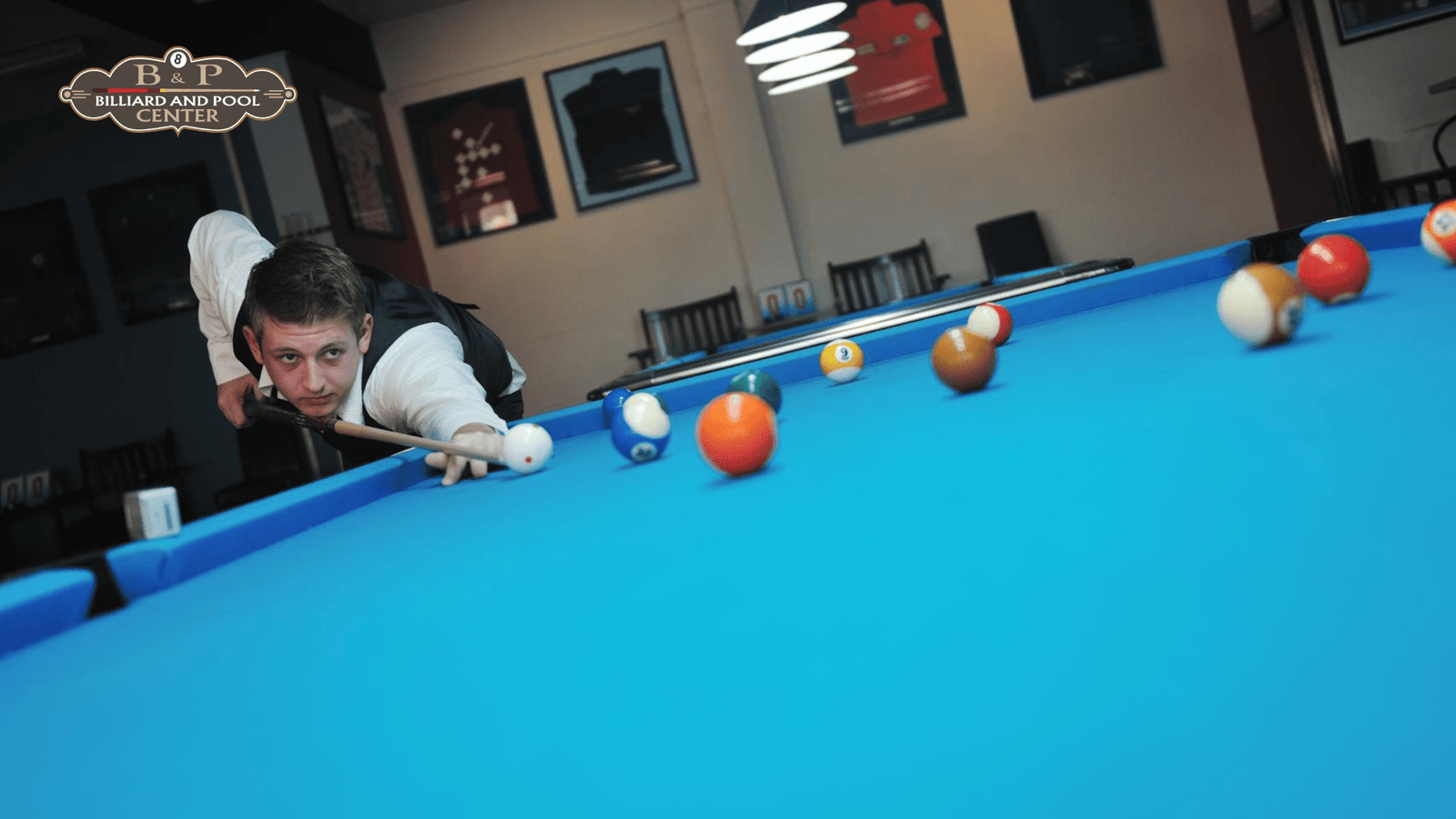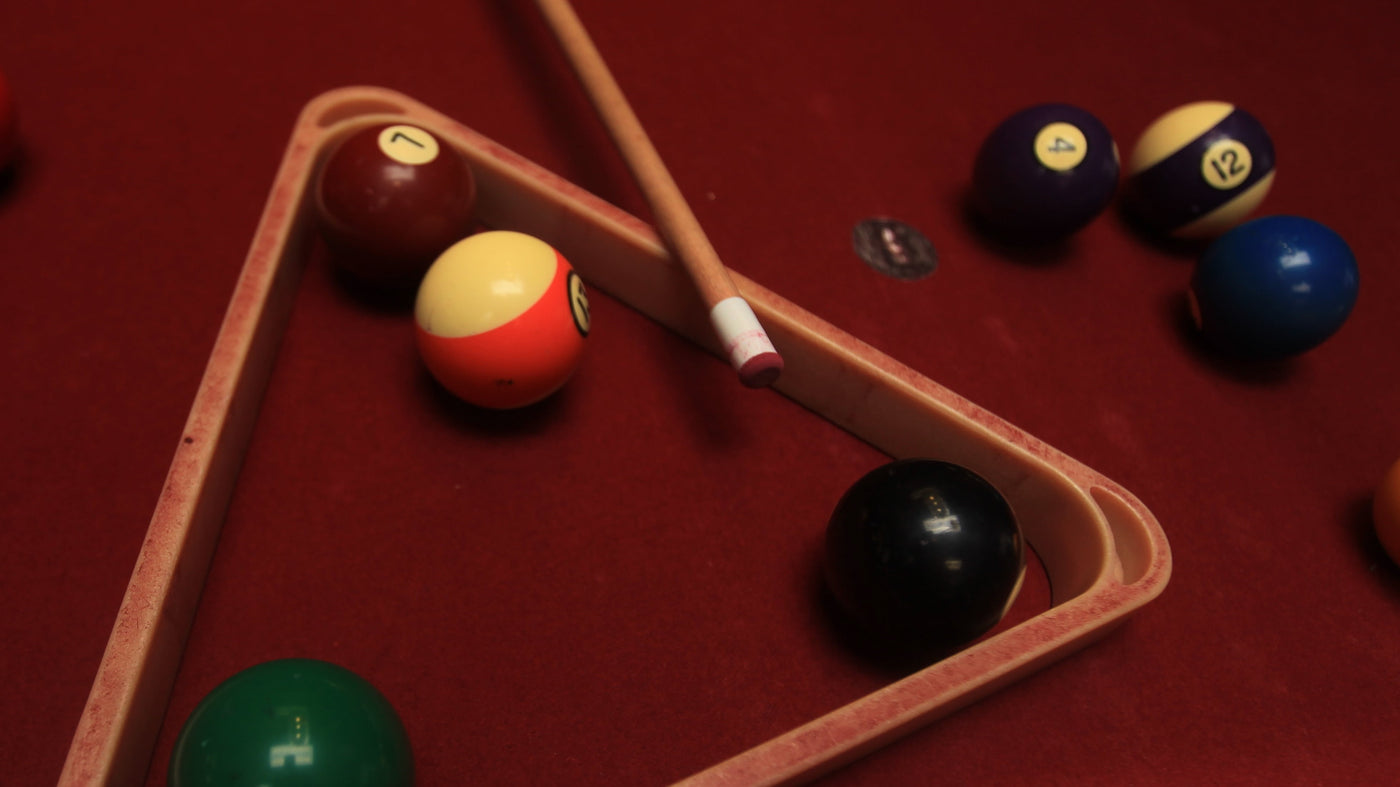Trick shots are the magic of the pool world. These are those moments when skill and geometry unite to create awe.
Everyone remembers the first time they saw the cue ball curve around another or jump perfectly into a pocket. The beauty of pool trick shots is about confidence, creativity, and control.
And the best part? You don’t need to be a pro to master them.
This guide will show you simple, visually striking trick shots that anyone can learn, along with the gear that makes a real difference.
Why Learn Pool Trick Shots?
Trick shots are not just for entertainment, they improve hand-eye coordination, stroke control, and understanding of cue ball behavior.
Learning them sharpens fundamentals like spin, angle calculation, and speed control.
Benefits of learning trick shots:
• Boosts cue ball control and accuracy.
• Helps read table patterns better.
• Improves performance under pressure.
• Builds crowd confidence and fun atmosphere.
Essential Trick Shots You Should Master
Mastering trick shots comes down to precision, not power. Below are highly learnable moves that impress without requiring years of experience.
1. The Classic Bank Shot
A beginner-friendly move where you bounce the ball off one or more rails before potting it. Use soft, controlled strikes and visualize the angle of reflection, like light bouncing off a mirror.
2. The Masse Curve
A masse shot is when the cue ball curves around another ball to reach its target. Use a masse cue stick, lift your stroke, and add some side spin. Once you get the hang of it, it’s a great way to show off your skill and control.
3. The Jump Shot
By striking down sharply behind the cue ball, you can make it leap over obstacles. Using a carbon fiber pool cue gives the speed and stiffness needed for this move. These cues distribute impact energy efficiently, helping the ball lift cleanly.
4. The Stop and Draw Combination

Shoot the cue ball straight into an object ball, making it stop dead or draw back. Try this with a carbon fiber pool shaft that enhances your stroke stability and minimizes vibration.
5. The Kiss Shot
This advanced yet achievable shot has the cue ball strike one ball to push it into another for a perfect pocket. It teaches precision in timing and contact points, a true classic that wins any crowd.
Equipment That Powers Up Your Trick Shot Game
Your equipment choice directly influences performance. Quality gear enhances consistency, allowing you to focus on creativity rather than compensation.
Cue Construction
• Billiard cue materials like maple or carbon fiber determine power transfer.
• A carbon pool cue reduces deflection, letting you apply sidespin effectively.
• For those looking out for higher performance, high end pool cues offer engineered tapers and customizable weights.
Cue Accessories
To protect and extend the life of your cue:
• Keep it safe in pool cue cases designed to maintain straightness.
• Maintain stroke precision with simple billiards accessories like chalk heads, tip tools, and joint protectors.
You can browse various billiard accessories on product pages linked throughout the site to find one that complements your style and cue grip.
Balancing Practice with Technique
Learning trick shots is as much about patience as precision. Here’s how to make progress without frustration:
• Start slow: Focus on understanding angles rather than speed.
• Experiment with cue elevation: Some trick shots require lifting or tilting the cue for spin.
• Keep consistent grip pressure: Too tight hampers control; too loose reduces stability.
• Track progress: Record short practice clips, it helps refine stroke consistency.
Remember, mastery isn’t about copying flashy moves; it’s about repeated deliberate practice using your top pool cues effectively.
Tips from the Pros

When professional players perform trick shots, there’s always a system behind the spectacle. They rely on predictable geometry and cue response.
Here are proven insights from cue experts:
• Align your eyes with the cue and follow through naturally.
• Use the best brand of pool cues suited to your preferred shot power and feedback style.
• Invest in durable pool cases to protect cues during transport, precision starts with preservation.
• Keep cue tips shaped correctly to ensure spin control for artistic trick shots.
When to Use Trick Shots in Games?
While trick shots look spectacular in practice, they can also serve tactical purposes during actual games. Strategic use can get you out of tough positions or impress in friendly competition.
Examples include:
• Avoiding snookers: Using a curve shot with your snooker cue to reach a blocked ball.
• Position control: Executing draw shots to set up your next strike.
• Table cleaning: Combining carom and combination shots for risk-free plays.
If you’re learning structured gameplay types like 8-ball or 9-ball, our other resource on pool rules gives context on how to legally integrate trick shots into standard formats.
Choosing the Right Cue for Your Level
Cue performance dramatically affects your ability to control the cue ball in advanced shots. Factors like taper, shaft composition, and balance decide how easily you can handle curve or jump moves.
Here’s a simplified guide to help:
|
Skill Level |
Recommended Material |
Cue Type |
Tip Suggestion |
|
Beginner |
Hard maple |
Basic cue stick |
Soft tip for control |
|
Intermediate |
Carbon fiber blend |
billiards pool cues |
Medium tip for mixed spin & power |
|
Professional |
Full carbon fiber |
professional pool sticks |
Hard tip for maximum feedback |
If you’re looking to level up your cue performance, check our detailed cue buying guide to understand technical specifications before purchase.
Maintenance checklist:
• Wipe the shaft after every game to remove chalk dust.
• Use cue joint protectors for moisture prevention.
• Keep cues upright in cases, never leaning on walls.
• Re-tip periodically to maintain contact integrity.
Consistent equipment care ensures the same smooth stroke every session, a vital aspect of trick shot control.
Common Mistakes to Avoid while Trick Shots

To master impressive trick shots faster, avoid these frequent slips:
• Striking too hard during spin-based shots.
• Using unmaintained cues that warp over time.
• Neglecting to chalk properly before every strike.
• Ignoring alignment, most trick shot errors stem from poor eye-line placement.
Minimizing small mistakes results in massive improvement especially when performing for an audience.
FAQs
Q: What’s the easiest pool trick shot for beginners?
A: The simplest is the stop shot. Hit the cue ball squarely on center for it to stop right after contact. It’s great for learning control and timing.
Q: Which cue type works best for trick shots?
A: A carbon fiber cue or professional pool cue suits trick shots best due to enhanced stiffness, low deflection, and consistent feedback.
Q: How often should I replace my cue tip?
A: Every 6–12 months depending on use. A worn tip reduces spin accuracy and control during draw or curve shots.
Q: Are trick shots allowed in tournaments?
A: In formal play, only legal contact shots count but controlled curve, bank, or combination shots are fair and highly respected when executed correctly.
Q: What accessories should every player own?
A: Essentials include pool cue cases, chalk, tip shapers, gloves, and a soft microfiber cue towel to maintain grip quality.
Bringing It All Together
Trick shots aren’t just for show, they’re the artful side of perfection. With consistent practice and the right gear any player can turn the pool table into a stage for skill and creativity.
Every improvement begins with one confident stroke, and mastering these moves is your cue to impress every time.
If you're ready to refine your game and upgrade your setup, browse Billiard and Pool Center to bring pro-level control and style to every shot.


